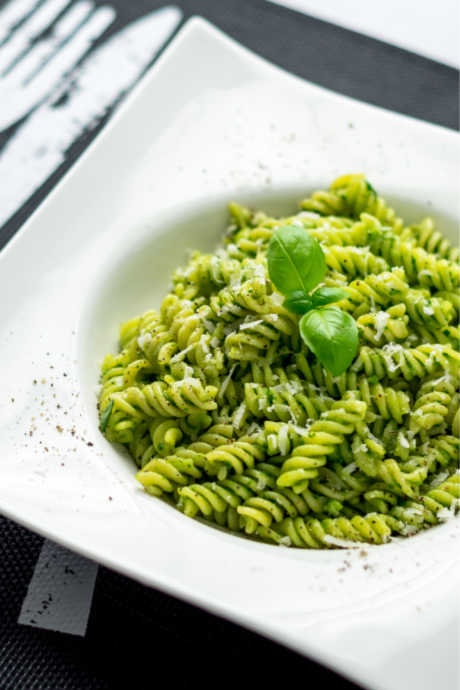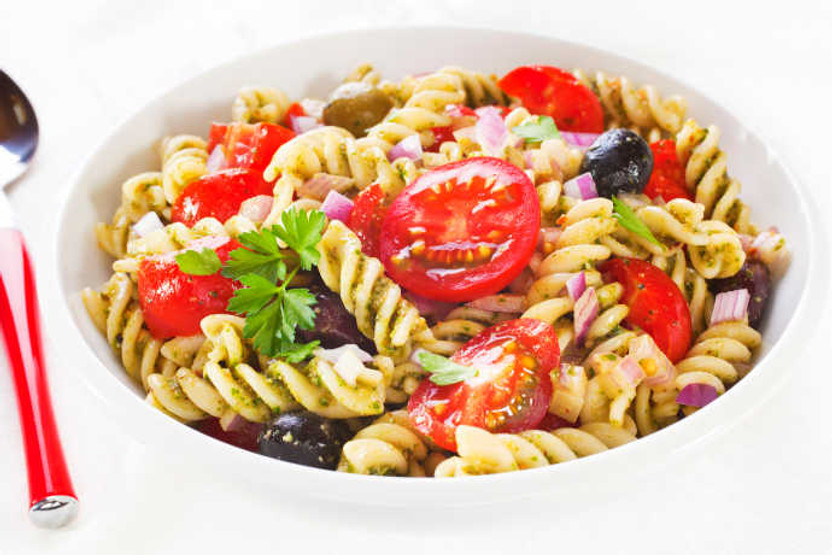Make Swoon-Worthy Pasta Salad This Summer
Posted by Julie on Jul 1st 2019
Pasta salad sounds as if it ought to be a delicious addition to barbecues and picnics, but it rarely turns out as good as we’d hoped. That’s why we decided to explore the details of this dish. We looked to respectable, even gourmet, sources to learn more about the do’s and don’ts of pasta salad. While there were a few points of disagreement, we did come away with some smart suggestions and even a couple hard and fast rules. Want to make your next pasta salad the star of the show? We can help!
Choose and Cook Your Pasta
Of all the guidance we read on the topic of pasta salad, this quote from Serious Eats stood out:
“We don't want pasta prepped as a salad, we want pasta that just happens to taste good when not hot.”
Therefore, don’t feel bound to include particular ingredients because they fit with what you think you know about pasta salad. Instead, allow yourself to experiment within the guidelines of what tastes good.
Start with your pasta. The general consensus is in favor of short, small shapes that cook evenly and will combine well with your add-ins. Rotini, fusilli, orecchiette, orzo, and penne all got approving nods.

On the other hand, tortellini and macaroni got a unanimous thumbs-down. While Slate is on board with farfalle, Bon Appetit is vehemently opposed to it. Other pasta shapes to avoid are any of the long strands like spaghetti, fettuccine, or linguine. It’s nearly impossible to combine pasta and add-ins into a single bite with noodles that must be twirled.
It’s a toss-up as to how long to cook the pasta when it’s destined for pasta salad. Serious Eats maintains that pasta should be overcooked and then rinsed in cold water to regain its firm texture. But both Bon Appetit and Food & Wine stand by cooking pasta al dente.
We’re inclined to cook our pasta al dente, and here’s why: Rather than rinsing it in an ice bath to cool it down, we want to try Bon Appetit’s method of tossing their cooked pasta with olive oil and allowing it to cool on a baking tray. The olive oil keeps it from sticking together, and it won’t get soggy in an ice bath or under running water.
However you choose to cook and cool your pasta, we must reemphasize Food and Wine’s advice to salt your pasta water generously. Not only does it season your pasta, it also helps prevent it from getting sticky, which is especially key when making pasta salad.
Be Selective With Your Add-Ins
There’s more to pasta salad than pasta, but choose your add-ins wisely. Not everything complements pasta, and some ingredients aren’t nearly as appetizing when they aren’t hot.
Another unanimous view we found is that vegetables in pasta salad ought to be roasted or sauteed. At minimum, they ought to be blanched and shocked. Don’t toss a bunch of diced or shredded raw vegetables into the mix. Instead, chop them into pieces the same size as your pasta and cook them to let their flavor develop. Serious Eats suggests adding grape or cherry tomatoes to a saute pan and heating them until they burst.

Cheese can be a delicious addition to pasta salad, but Serious Eats begs you to steer clear of a select few that can get slimy or greasy, like Brie, colby, Monterey jack, and cheddar. Stick with chevre, feta, mozzarella pearls or cubes, or shredded hard cheese like Parmesan or Pecorino Romano.
Finally, every source we consulted insisted on adding fresh herbs to pasta salad. They’re all in season, and you can even grow them yourself. Think basil, mint, cilantro, and chives, among other leafy herbs. They don’t just add color, but plenty of flavor too.
In short, choose a select number of add-ins, and make quality your top priority. This approach will yield much tastier results than a mishmash of mediocre ingredients.
Sauce and Serve Your Pasta
Once again, our sources agreed: Put down the vinegar, and pick up the oil. Across the board, they opted for sauces with an olive oil base. Remember that pasta salad is simply a pasta dish that tastes good when it’s not hot. We doubt you’d douse a hot pasta dish with a sauce where vinegar is the primary ingredient. A little bit is fine, but too much vinegar alters the flavors (and not in a good way). Try adding lemon juice instead. You’re also less likely to overdo it with lemon juice than with vinegar.
Avoid mayonnaise and ranch dressing too, for the same reasons noted above. Butter is also a no-no; even at room temperature, it will start to solidify and give your pasta salad an odd texture.

If olive oil enhanced with aromatics still sounds too plain, try pesto. Check the consistency of your pesto; it should be thin enough to coat all the surfaces of your pasta. Add olive oil or even a little water to help extend its coverage.
Pasta salad tastes best when the flavors have had time to combine and to warm up to room temperature. Pasta salad straight from the refrigerator often tastes bland, as the flavors are dulled by cold. Be sure to allow plenty of inactive prep time, both for your pasta salad to sit in the refrigerator and for it to lose its chill before serving.
Pasta Salad Recipes to Try
While we’ve given you all the tips you need to develop your own delicious pasta salad recipe, we understand if you’d prefer to start with a few tried-and-true options.
This recipe from Serious Eats is ideal for summer, especially when you have homegrown tomatoes and basil. They advocate for overcooking your pasta, but feel free to stop at al dente if you prefer. They also note that mozzarella pearls or cubes are optional, but we think they’re necessary. Don’t try to substitute dried basil for fresh, either. Just be sure to add the basil right before serving.
This recipe from Food & Wine checks all the pasta salad boxes. It calls for grilled summer vegetables, feta cheese, and orecchiette pasta, with a hefty helping of olive oil jazzed up by lemon juice and minced shallots. Sprinkle fresh parsley over the top before serving, and you’ll have an elegant pasta salad worthy of any summer meal.
Finally, we have to share an old standby of ours. This orzo salad from Giada de Laurentiis has accompanied us to many potluck gatherings, and we always come home with an empty container. It does call for a red wine vinaigrette dressing, but we’ll admit we usually halve that part of the recipe and up the amount of olive oil. Don’t skimp by cooking the orzo in water instead of chicken broth as directed; the flavor sacrifice isn’t worth it. Likewise, be sure to use fresh basil and mint. We hope you’ll love this one as much as we do.

